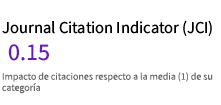Picasso: Paper sculptures for a new aesthetic Thought.
DOI:
https://doi.org/10.24310/BoLArte.2016.v0i37.3274Abstract
Although since its inception paper was mainly linked to its purpose as a support for writing, soon it found in art a medium in which to deploy its boldest creative possibilities. So artists have used it as support in different artistic techniques or procedures such as drawing, printmaking, watercolor, etc. Techniques from the two-dimensionality of paper have helped to broaden the expressive horizons of art. However, the importance acquired by its three dimensional conformation in art is less well known. The emergence of paper as sculptural material in art occurs in the early twentieth century, at the beginning of Modernism in art, with Picasso as the main point of reference. The projection of his works done in paper, will be crucial to understanding many of the sculptural postulates of the early avant-garde movements, and influence decisively in the later development of modern art.Downloads
Metrics
Downloads
Published
How to Cite
Issue
Section
License
Todos los contenidos publicados en la revista Boletín de Arte están sujetos a la licencia Creative Commons Reconocimento-NoComercia-Compartirigual 4.0 cuyo texto completo puede consultar en <http://creativecommons.org/licenses/by-nc-sa/4.0>

Los/as autores/as cuyas contribuciones sean aceptadas para su publicación en esta revista conservarán el derecho no exclusivo de utilizar sus contribuciones con fines académicos, de investigación y educativos, incluyendo el auto-archivo o depósito en repositorios de acceso abierto de cualquier tipo.
La edición electrónica de esta revista esta editada por la Editorial de la Universidad de Málaga (UmaEditorial), siendo necesario citar la procedencia en cualquier reproducción parcial o total.











4.png)
